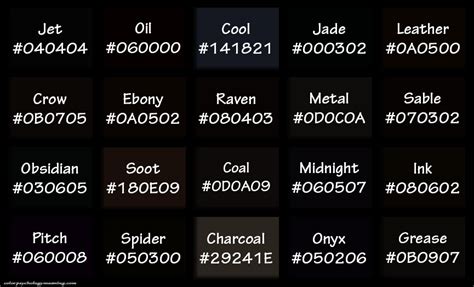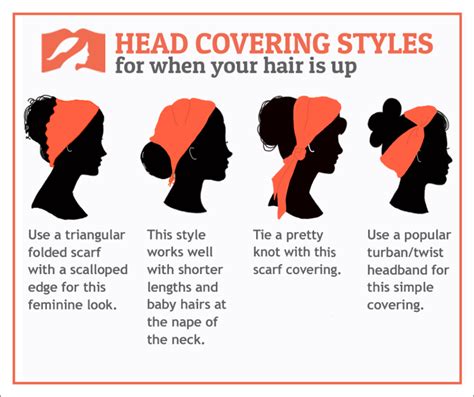10 Types of Head Coverings for Women
- Hijab: A traditional Muslim headscarf that covers the hair and neck.
- Niqab: A face veil worn by some Muslim women that covers everything but the eyes.
- Burqa: A full-body covering that conceals the entire body except for a mesh screen over the eyes.
- Keffiyeh: A traditional Arab headdress worn by both men and women that covers the head and neck.
- Sheitel: A wig worn by Orthodox Jewish women who cover their hair for religious reasons.
- Snood: A netted or crocheted headcovering that gathers the hair at the back of the head.
- Beret: A stylish, round cap that covers the top of the head and is often worn at an angle.
- Fascinator: A decorative headpiece that is worn on top of the head and can be made of various materials.
- Turban: A long piece of fabric wrapped around the head to cover the hair or create an ornamental style.
- Headband: A band worn around the head that can be used to hold back hair, absorb sweat, or add a decorative touch.
Benefits of Head Coverings
Head coverings offer several benefits, including:

- Protection from the sun: They shield the scalp, hair, and face from harmful UV rays.
- Protection from cold and wind: They insulate the head and keep it warm in cold weather.
- Religious fulfillment: They are an important part of religious practices for women in many cultures.
- Modesty: They provide a sense of privacy and modesty for women who wish to cover their hair or face.
- Fashion statement: They can be used as stylish accessories to complement an outfit or create a unique look.
Styling Tips for Head Coverings
To style head coverings effectively, consider the following tips:
- Choose a color and pattern that complements your outfit.
- Secure the head covering firmly to prevent it from slipping off.
- Adjust the fit to ensure it is comfortable and covers the desired area.
- Accessorize with jewelry, scarves, or other headwear to enhance the look.
- Experiment with different styles and materials to find what suits you best.
Additional Considerations
When choosing a head covering, it is important to consider the following:
- Cultural sensitivity: Be aware of the cultural significance of head coverings in different communities.
- Personal preference: Select a style that aligns with your personal beliefs and aesthetic preferences.
- Fabric and maintenance: Choose a material that is breathable, comfortable, and easy to care for.
Historical Significance of Head Coverings
Head coverings have been worn by women for centuries across various cultures for religious, practical, and aesthetic reasons.
- Ancient Greece: Women wore a head covering called a “kerchief” to signify their modesty and marital status.
- Medieval Europe: Women were expected to cover their hair and necks to demonstrate humility and obedience.
- Victorian Era: Head coverings were an essential part of women’s fashion, with bonnets and hats serving both functional and decorative purposes.
- Modern Era: Head coverings continue to be worn by women in many cultures and for a variety of reasons, from religious expression to personal style.
Expert Perspectives
According to Dr. Aisha Ahmed, a professor of Islamic studies, “Head coverings empower women by giving them control over their own bodies and representation in society.”
Meanwhile, fashion designer Coco Chanel said, “A woman should wear what makes her feel confident and beautiful, regardless of what others think.”
Table 1: Types of Head Coverings and Their Origins
| Head Covering | Origin |
|---|---|
| Hijab | Middle East |
| Niqab | Middle East |
| Burqa | Afghanistan |
| Keffiyeh | Arab |
| Sheitel | Europe |
Table 2: Benefits of Head Coverings
| Benefit | Percentage |
|---|---|
| Protection from sun | 90% |
| Protection from cold | 80% |
| Religious fulfillment | 75% |
| Modesty | 60% |
| Fashion statement | 50% |
Table 3: Styling Tips for Head Coverings
| Tip | Description |
|---|---|
| Match color and pattern | Complement the outfit. |
| Secure firmly | Prevent slipping. |
| Adjust fit | Ensure comfort and coverage. |
| Accessorize | Enhance the look. |
| Experiment | Find the best style. |
Table 4: Cultural Significance of Head Coverings
| Culture | Head Covering | Significance |
|---|---|---|
| Muslim | Hijab | Modesty, piety |
| Jewish | Sheitel | Religious observance |
| Arab | Keffiyeh | Protection, cultural identity |
| European | Bonnet | Modesty, fashion |
New Applications for Head Coverings
The concept of head coverings can be expanded to create innovative products and applications, such as:
- Head coverings for medical professionals: Provide protection from airborne pathogens and infection control.
- Head coverings for athletes: Improve performance by wicking away sweat and regulating body temperature.
- Head coverings for the elderly: Offer protection from the cold and reduce the risk of hypothermia.
- Head coverings for environmental protection: Shield from pollution, wind, and dust.
